ART SG remains confident after another successful event
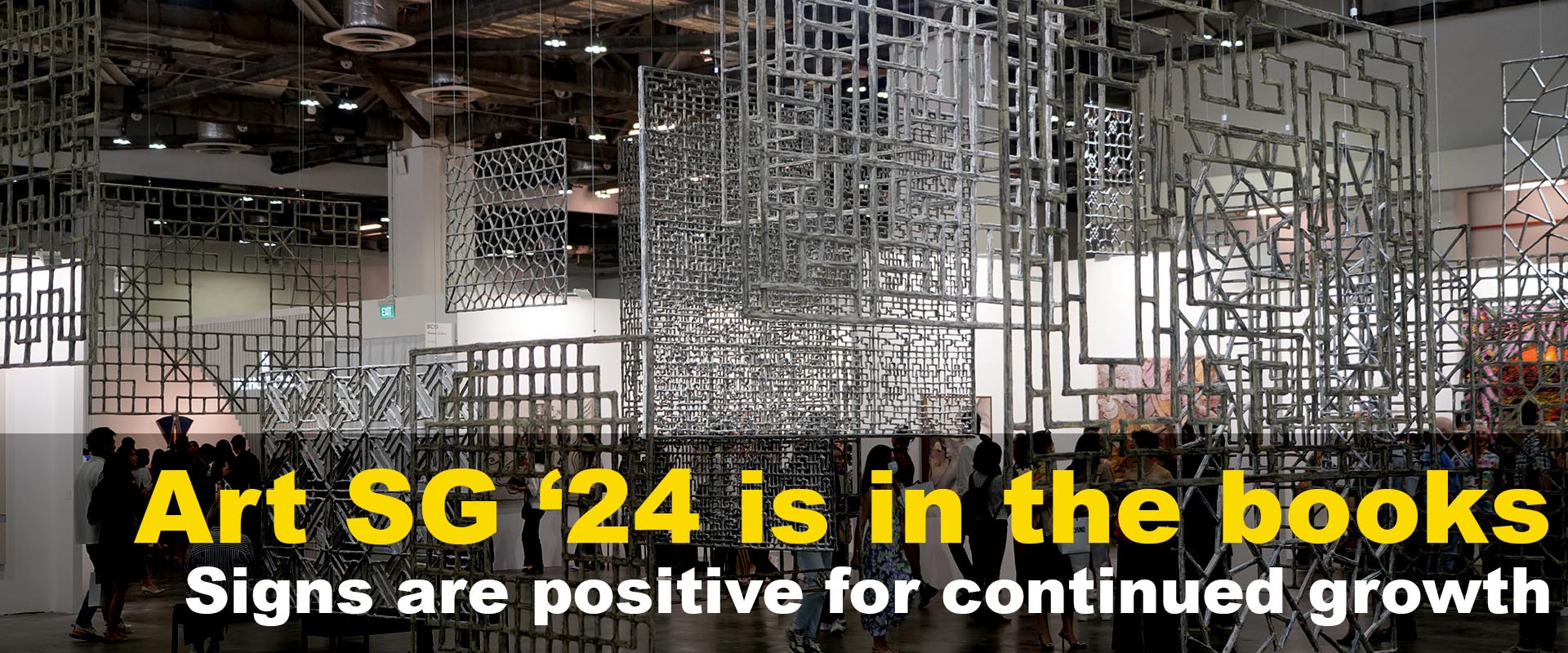
The second annual Art SG fair in Singapore came to a close on the 21st of January after hosting over 45,000 art collectors and admirers during the four-day event. A rainy weekend dampened outdoor activities in one of the world’s cleanest, wealthiest, and most walkable cities, thereby keeping even more people indoors where the action inside the Marina Bay Sand Convention Centre sizzled.
The first road bump for Art SG 2024 saw the gallery roster reduced by over 80 galleries compared to 2023, including established international stalwarts like David Zwirmer and Pace Galleries. There were several reasons for the backslide, with gallerists citing geopolitical instability, global inflation, planned expansion in other areas, the softened art market of 2023, and the need to spread fair budgets around in a region that has seen steady growth in the number of quality art fairs to choose from. Nevertheless, 39 new galleries were excited to participate at Art SG for the first time along with around 75 returnees. Quality programs from 11 younger galleries in the Futures series gave the fair plenty of fresh faces, raw energy, and new levels of excitement on the main floors. Several parallel programs including art-related films and timely art talks combined with an eclectic blend of single, dual, and group booths curated by some of the world’s finest galleries.
Of special note was the participation of a large contingent of excellent Singapore-based galleries. Most of the galleries located at the renowned Gillman Barracks art enclave participated in either Art SG, SEA Focus, or both. Included were booths curated by Sundaram Tagore, The Columns, Yavuz, Richard Koh, Fost, OTA, ShanghArt, and Mizuma, Likewise, the Tanjong Pagar Distripark contingent was led by Gajah, Whitestone, and 39+ Art Space. The latter presented works in the Futures program, as did another Singapore gallery, Art Porters. Many also included parallel programming in their home spaces, as did Singapore’s leading museums and art institutions, thus confirming the city as the most important place to be for regional arts-related activity in January.
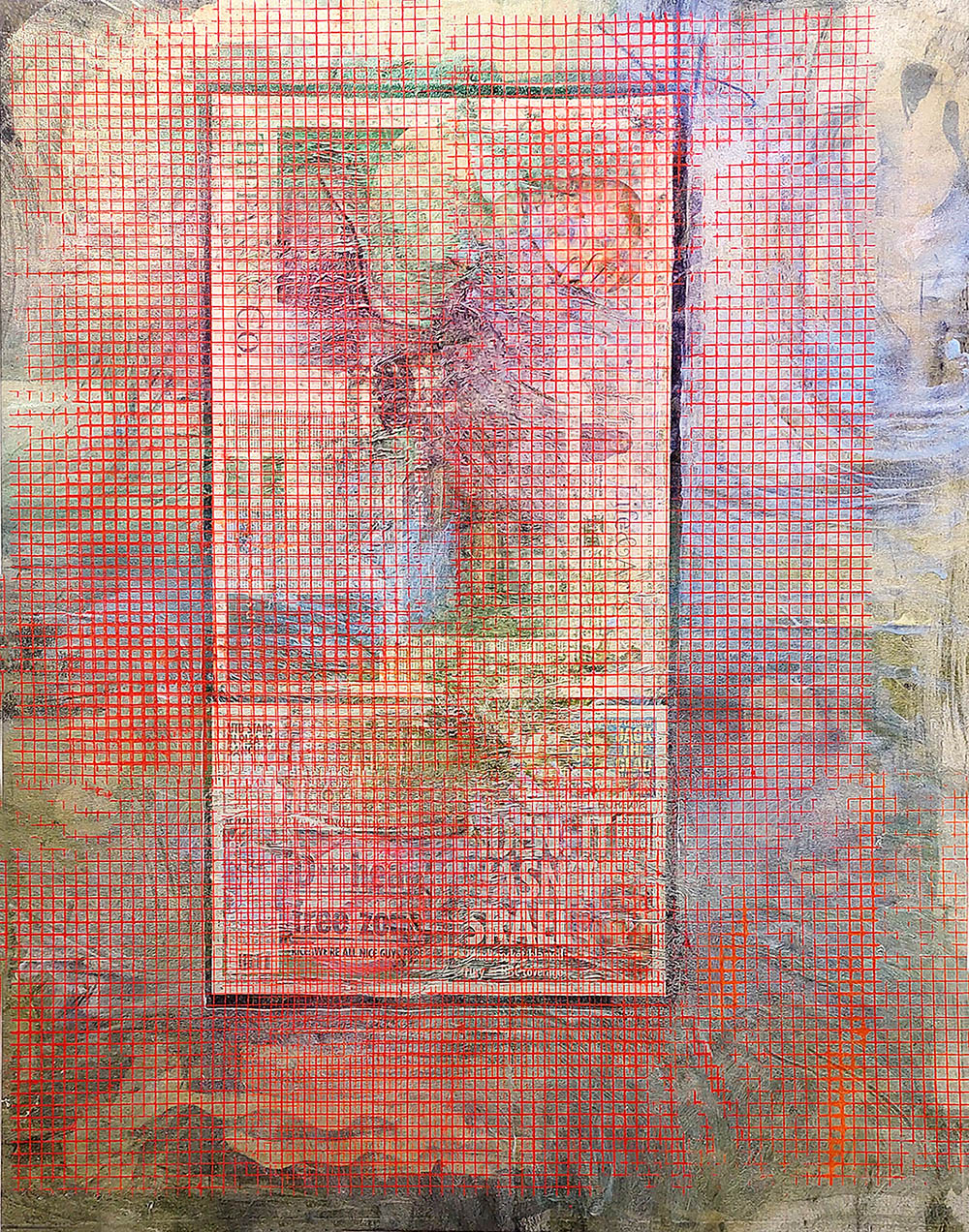 Mandy El Sayegh, Net-Grid Study, 154x121cm 2023 @ Thaddaeus Ropac (Image/AF)
Mandy El Sayegh, Net-Grid Study, 154x121cm 2023 @ Thaddaeus Ropac (Image/AF)
While complete sales information had not been tabulated at the time of publication, early reports confirmed that Thaddaeus Ropac Gallery successfully placed several highly coveted works, including an Anselm Kiefer for just under USD 1.2 million, as well as pieces by Alex Katz, James Rosenquist, rising star Mandy El-Sayegh, Lee Bul, Oliver Beer, and Miguel Barceló.
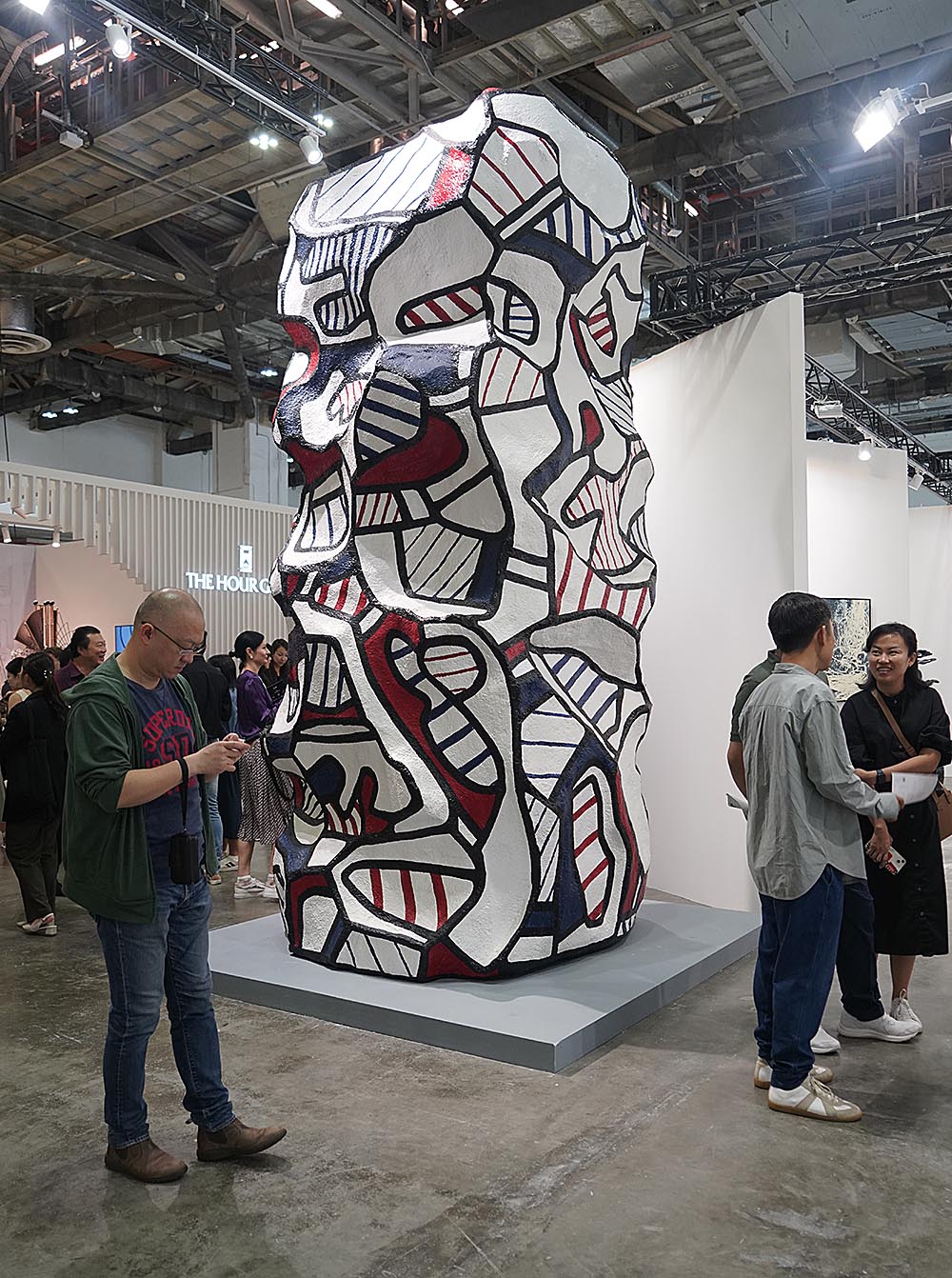
Lehmann Maupin sold several works, including a painting by David Salle for US$250,000 to a prominent family collection in Singapore, as well as multiple works by Lee Bul (US$200,000 – US$300,000) and Kim Yun Shin (US$60,000 – US$90,000). Johyun Gallery sold multiple works by Lee Bae for prices in the range of US$50,000 – US$180,000 each and a painting by Park Seo-Bo for US$250,000. Asia Art Center sold works by Li Chen and Ju Ming to private collectors for a total of around US$600,000.
In general, sales of Asian artists were strongest, particularly those from Korea and Japan. Galleries that catered to the wider SE Asia preferences scored much better than the international and experimental works. That said, many of the larger sales were for Western artists.
 Marco Kueh "Woven Billboards" at The Back Room KL & PLATFORM, Art SG. (In-situ image courtesy of Sam Chin & Art SG)
Marco Kueh "Woven Billboards" at The Back Room KL & PLATFORM, Art SG. (In-situ image courtesy of Sam Chin & Art SG)
The Malaysian Contingent
Speaking of opportunities, the FUTURES program at Art SG featured eleven galleries with less than ten years in the business. Artemis Gallery offered a riveting new media presentation, while two of the most interesting booths hailed from Malaysia. Not only did all of the young galleries present solid programs, they also produced early stars of the show.
Before the event, textile works were poised to dominate several booths and major open spaces, with the grandest of them all being the monumental weaving of Sarawak artist Marcos Kueh @ The Back Room (Kuala Lumpur). Also exhibited by the gallery were two promising mid-career tapestry artists, Guatemalan Antonio Pichillá Quiacaín and Red Hong Yi (Sabah). The gallery was pleased to report the sale of the large woven installation by Kueh for high five figures to a Singapore institution.
Rissim Contemporary Gallery, also of KL, reported a combined twenty sales from its booth and catalog. Paul Nixon Atia exhibited works from his series “Torun Tana?" which explores his relationship with his native Sarawak and Bidayuh heritage. Saiful Razman presented works from “Apartments”, a study of Malaysia's apartment projects from the nineties using a unique blend of medical gauze and rolled tissue paper. One of Razman's works was purchased by a private museum in Kuala Lumpur. (see previous review).
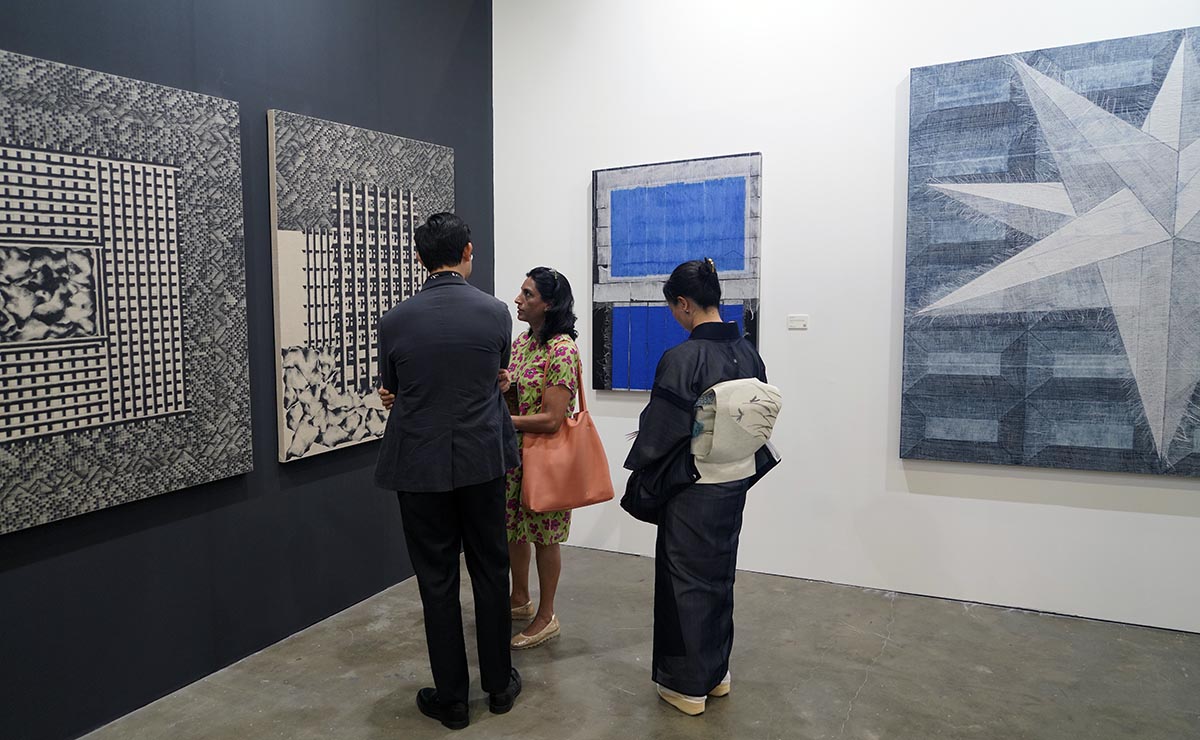 Rissim Contemporary featured works by Paul Nixon Atia (L) and Saiful Razman (R) (Image by Artfronts)
Rissim Contemporary featured works by Paul Nixon Atia (L) and Saiful Razman (R) (Image by Artfronts)
Another popular booth in the FOCUS section was Wei-Ling Gallery (Kuala Lumpur) which featured a captivating display of works by Wong Chee Meng that incorporate augmented reality animation that sprung to life when viewed through a smartphone app.
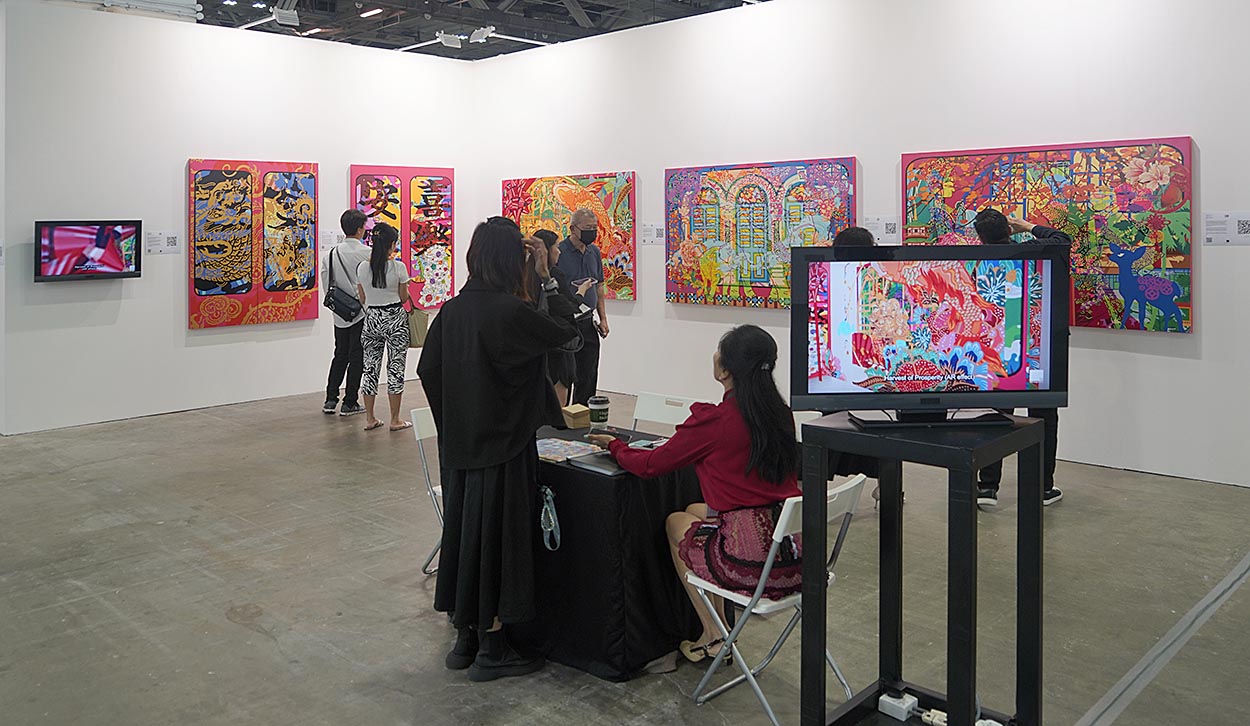 Wei-Ling Gallery featured the augmented reality paintings of Wong Chee Meng (Image:AF)
Wei-Ling Gallery featured the augmented reality paintings of Wong Chee Meng (Image:AF)
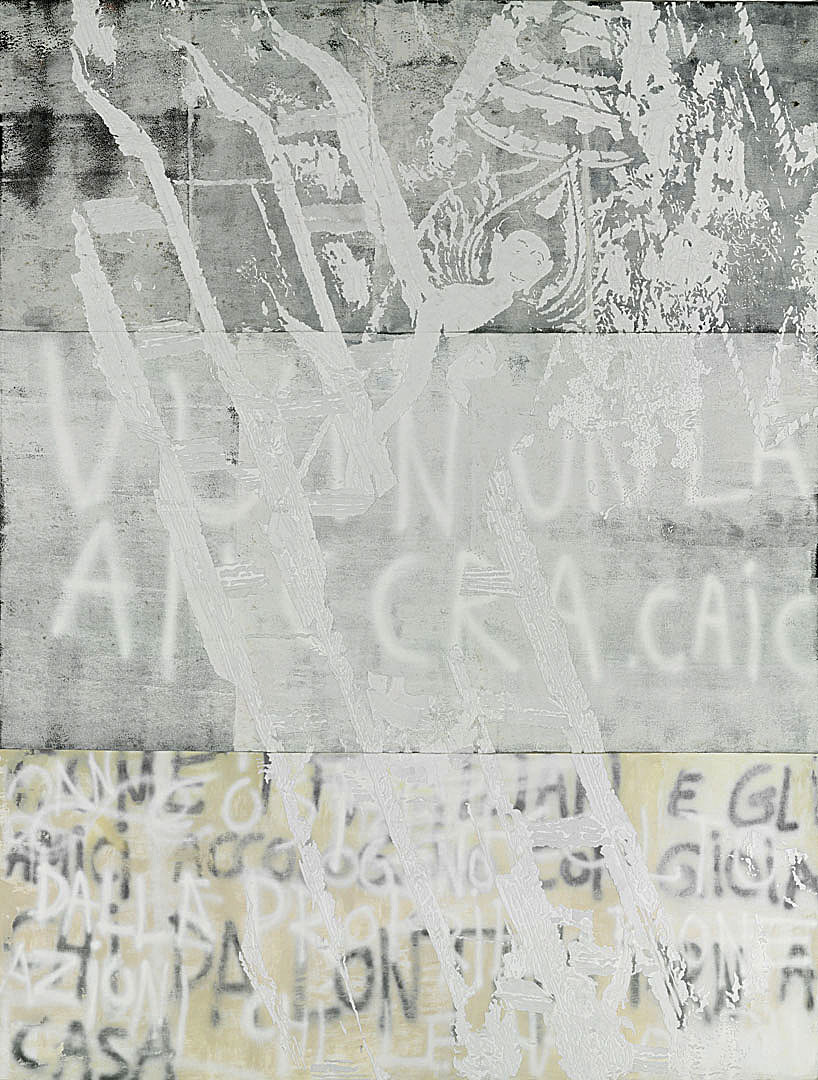 Natee Utarit, 330 x 250cm 2020 @ Richard Koh (Image courtesy of the artist and RKFA)
Natee Utarit, 330 x 250cm 2020 @ Richard Koh (Image courtesy of the artist and RKFA)

Trends
As mentioned, tapestries and woven works were widespread, not surprisingly since the history of weaving runs deep in the region’s heritage. Some casual art admirers may not know that centuries ago in both Europe and Asia, tapestries were often the preferred decoration of choice to record history and provide pictorial beauty years before paintings began to dominate. Although not as edgy as some of the alternative materials and methods now employed by contemporary artists, the quality of woven workmanship on display at Art SG was second to none.

Technology Continues to Grow
Asia has also been a major player in global technology for several decades. Galleries incorporating video presentations into their exhibits were ubiquitous at Art SG and downright dominant in the current exhibitions at S.A.M. @ Tanjong Pagar Distripark.
In all venues, works by artists who rely at least partially on technology or digital imaging in their creative processes were exhibited in a higher percentage of booths this year, including gallery presentations that were not specifically marked as having digital content. (More on this in another article to come).
There were some remarkable works created by computers and then presented using many different finishes and techniques, including imagery mixed into collages, acrylic mounts, layered three-dimensional works, woven slivers of printed materials, tablet drawings, partial and whole digital silk screenprints, augmented reality, screen projections & displays, plus other combinations of analog and digital application.
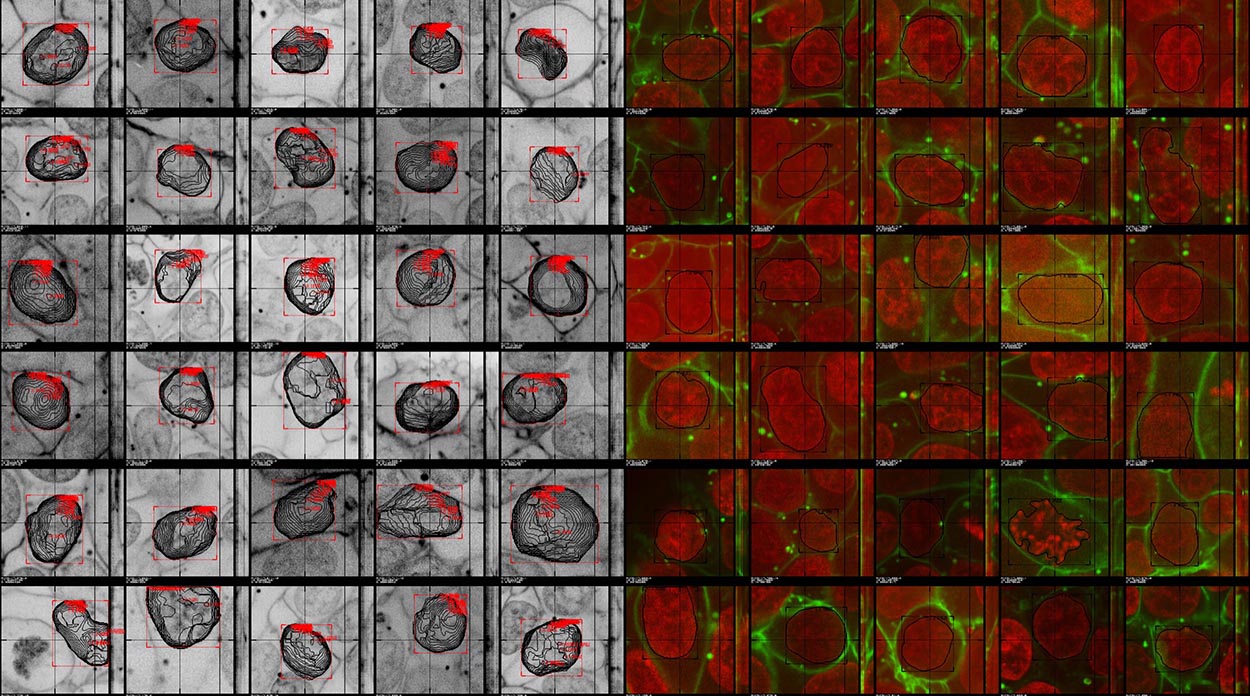 Ryoji Ikeda, data.gram 13 [cells], 2022, LED display, computer, 71.7 x 41.6 cm (Courtesy TARO NASU )
Ryoji Ikeda, data.gram 13 [cells], 2022, LED display, computer, 71.7 x 41.6 cm (Courtesy TARO NASU )
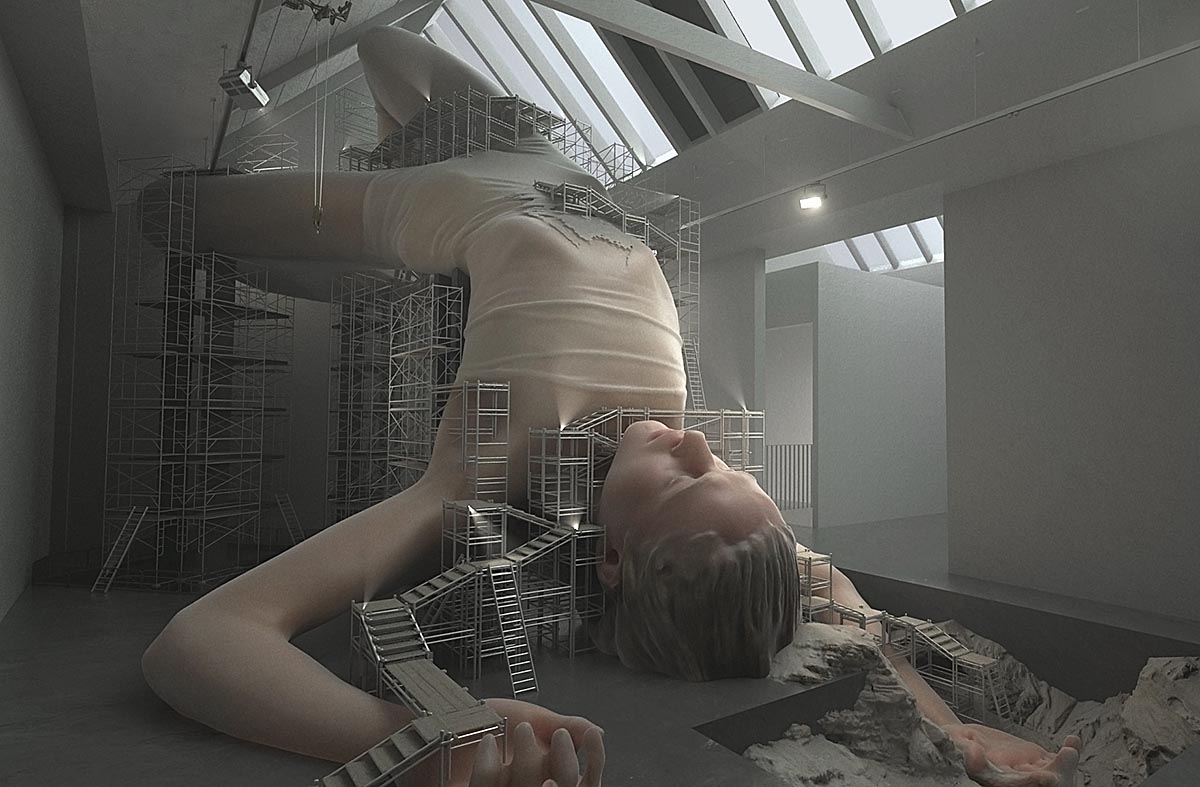 Evelyn Bencicova and Enes Güç WIP, 2020 Hahnemühle/Dibond 56×100cm, edition 3/6. Courtesy Artemis Gallery
Evelyn Bencicova and Enes Güç WIP, 2020 Hahnemühle/Dibond 56×100cm, edition 3/6. Courtesy Artemis Gallery
Videos Disappoint
Unfortunately, my excitement about the growth in technology content paused at the video presentations, as it has at previous international fairs and exhibitions attended on four continents over the past thirty years. I found most of them to be somewhat underwhelming. Given that I spent the majority of my early adult life in various technology sectors and have supported the increased immersion of technology in contemporary arts since the early 90s, I wouldn't call myself a Luddite. Nevertheless, I call a spade a spade. Most of the videos didn't work for me, with too much of a gamey feel on one end and pseudo-intellectualism on the other. Besides, kaleidoscopes are very 90s.
Scale and ambiental integration do matter with the type of work entailed. In this case, I found most of the video presentations to be decidedly run-of-the-mill especially considering the normal levels of heightened excitement around this art form in recent years.
For what it’s worth, the finest installation of augmented reality video currently in Singapore can be seen at the Changi Airport where rushing water appears to have crashed through the ceiling and is flooding the airport. It truly is magnificently rendered.
Sidenote: I’d like to include a shout-out to several excellent cinematographic and digital video presentations at SAM at Tanjong Pagar Distripark. The spacious dark rooms with appropriately subtle music and quality videos were engaging and informative. Particularly powerful was the “Proof of Personhood” exhibit where all three presentations were both visually stellar and socially poignant, presenting topics about being human in the 21st century, the value of arts, the dangers of AI in media, and the pitfalls of being a woman in the rat nest known as social media. Well done, SAM.
 Details of several works featuring wild textures and treatments at Art SG. Recognize any? (Image/AF)
Details of several works featuring wild textures and treatments at Art SG. Recognize any? (Image/AF)
Texture on Texture
I’m not sure to what extent the stunning growth of AI image generators, robots, and large-format 3D printers is disrupting the fine art market at this stage, but it seems like artists have already taken notice and continue to ramp up their games when it comes to both three-dimensional sculptures and two-dimensional artworks.
Sculptures are getting more elaborate, and even if they're not more intricate, the range and quality of finishes now being produced are certainly improving each year. Installations are including more and more elements, thus making them difficult to copy by AI imitators. Are these reactions to technology or just the normal course of artists transitioning in their search for unique approaches? Hard to conclude, but I know numerous artists who openly mention that they have modified their workflows and the sophistication of their output to stay one step ahead of the copiers.
The big change, however, is in the tacticity of 2D wall works. Gel mediums, powders, and sand used to thicken paint seem almost provincial today, with artists employing everything from plastic, wax, foam, tubes, burned paper, fabrics, gum, concrete, chemical compounds, and other industrial materials to help their thick and chewy paintings literally spring from the wall. I can easily envision squirrels setting up homes on cold winter nights somewhere in the crevices and negative spaces of these works, and I mean that in a good way.
As one who loves alternative materials/processes and is known to dabble in them myself, I say bring it on. Making physical attributes both the content and the story is an artistic challenge well worth continuing for another hundred years. Some of this is not new, of course. The contemporary art market has long been desensitized to unusual materials being used in art creation, with everything from toilets, urine, cow dung, stones, viles of aids-infected blood, books, and bananas taking center stage at one point or another over the past century.
But the scrunchy, puzzled faces of viewers can now be reserved for the works of artists incorporating myriad artistic styles and techniques using materials that we’ve never even heard of, including overproof rum, crushed coconut, currency, ramie vegetable fiber, bean emulsion, methacrylate, medical gauze, pure micronized silver, and second-hand cash register drawers. Disclaimer: I was forced to go to Wikipedia to educate myself about a few of these.
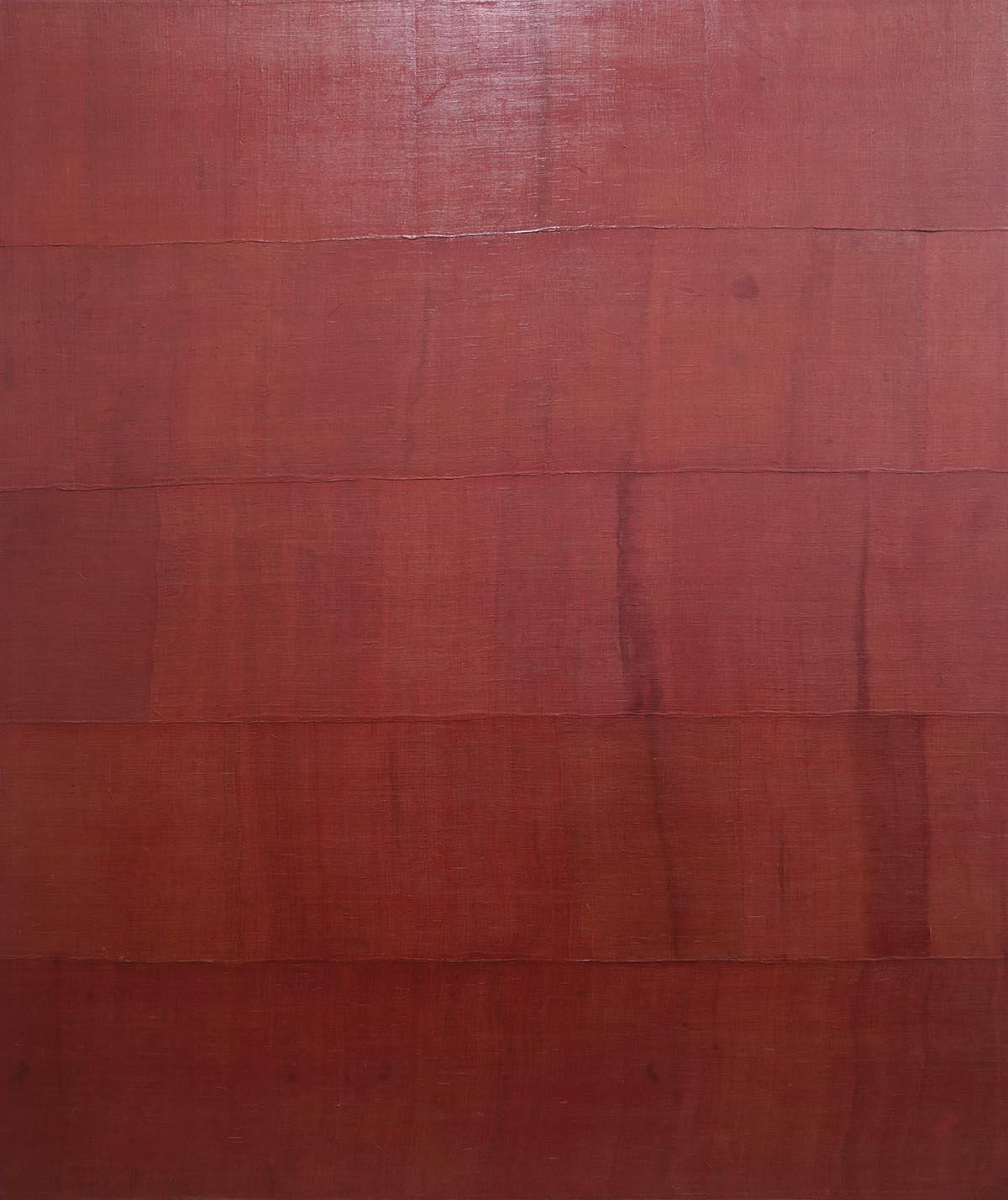 Jung Jong Mee "Song of Fisherman" 62x130cm Ramie vegetable fiber, bean emulsion, Pigment Dyes @ Columns (Image/AF)
Jung Jong Mee "Song of Fisherman" 62x130cm Ramie vegetable fiber, bean emulsion, Pigment Dyes @ Columns (Image/AF)
- - - - -
As for other trends, the current adoration for bright cartoon-like paintings, anime, manga, superhero comics, and kitschy content in all sizes, shapes, and materials continue for another year, as do softer pastels, bird and flower motifs. Exquisite ink works on paper were featured in numerous styles and genres. Art SG clearly knows this market and succeeded in compiling a roster of galleries that offer something to assuage the region’s collective tastes.
Comparing year over year, it seems that the NFT art-making imposters are finally all but dead and buried, and not a minute too soon. Hardly worth an afterthought at this stage.
There were also very few overtly controversial artworks, again not surprising as regional fairs tend to feature more quiet luxury and stealth wealth than shock and disturbance. As for polemic work related to anything about the ongoing wars, sovereignty claims, minority identities, or other forms of political strife, these were all largely dormant except in an occasional work with historical context. Identity seeking and cultural disruption are still central for artists in relatively young post-colonial nations, therefore it’s not surprising that some are still sifting through questions of personal purpose, faith, and future rather than tackling the broader global issues. Their days will come for that lofty task.
- - - - -
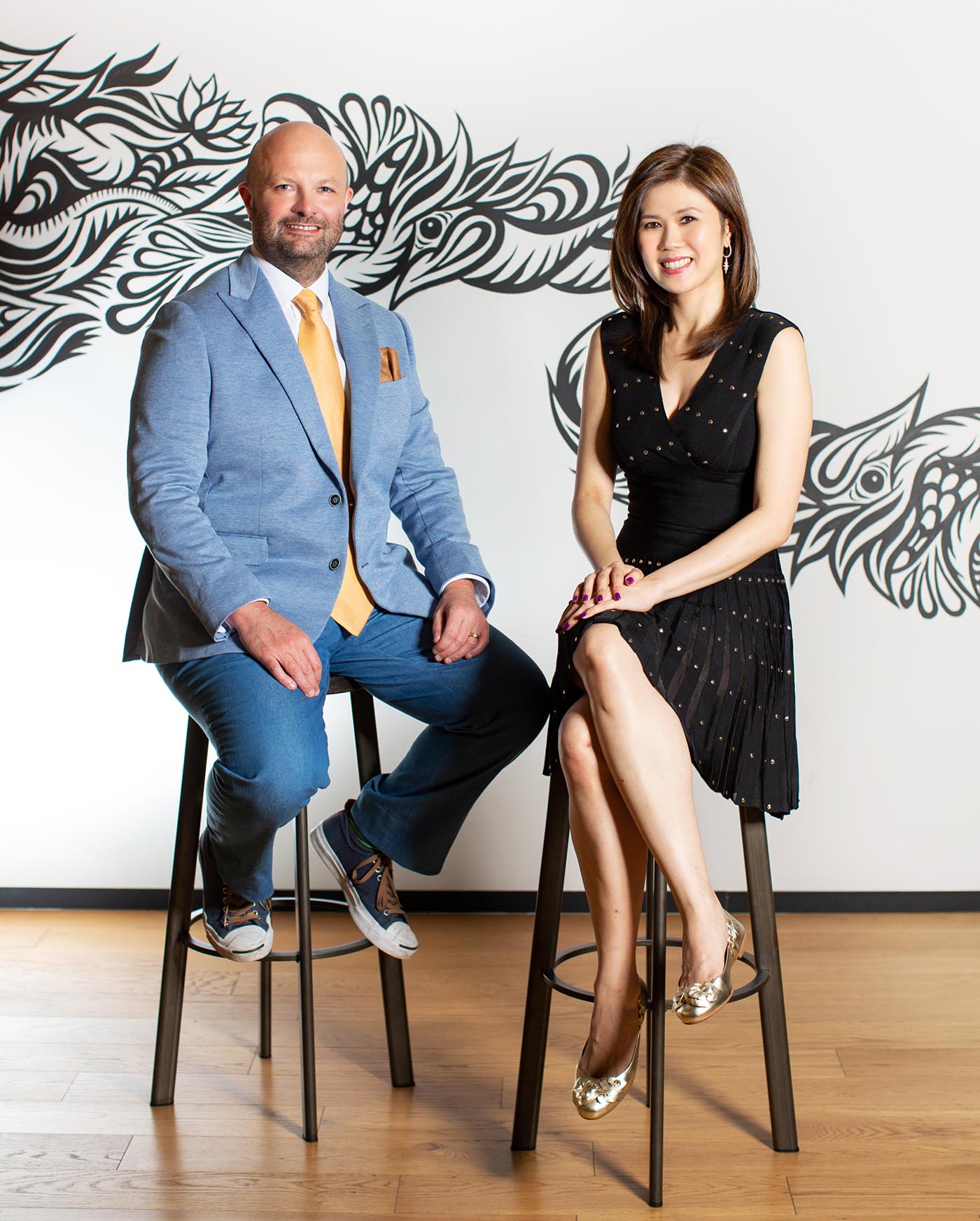 Art SG CO-founder Magnus Renfrew and Fair Director Shuyin Yang (Courtesy of Art SG)
Art SG CO-founder Magnus Renfrew and Fair Director Shuyin Yang (Courtesy of Art SG)
Continuing from last year’s event, beyond the art itself, I sought the answer to one simple question: where and how do Art SG organizers position themselves among the more established international fairs through SE Asia and Asia? Could they compete with Hong Kong Basel and Frieze Seoul, or would strong positioning as one of the best fairs of the next tier suffice?
Just twelve months ago, many were content that the show was actually taking place at all after several delays. Buoyed by a post-pandemic surge where pent-up buying power helped art markets recover in 2022, the initial Art SG in January 2023 surpassed expectations with over 160 participating galleries hoping to prosper from this demand, albeit in a relatively unknown market for some. Sales results were mixed, but the general consensus was that Art SG 2023 provided a solid platform from which to grow in subsequent seasons even if all of the original participants couldn’t commit to exhibiting at Art SG or any other regional fair consistently on an annual basis.
If organizers seemed quietly optimistic last year, the messaging from Day One this year was more bullish despite the size reduction to 114 galleries, with co-founder Magnus Renfrew, fair director Shuyin Yang, and UBS representative Jin Yee Young all confident in their assertions that Singapore and Art SG are serious about positioning themselves as the leading SE Asian art market. Factors aligned with their assessments include Singapore’s incoming wealth migration, local residency of a significant percentage of the region’s ultra-high-net-worth individuals, proximity to all important countries of the region (i.e.; Australia, Hong Kong, Mainland China, Taiwan, Indonesia, Malaysia, the Philippines, Vietnam, and South Korea,) plus Singapore’s stability, safety, financial backbone, and commitments from both private and public sectors to continue to invest heavily in the arts.
Off the record, there were murmurs that some galleries who chose not to return this year cited a potential disconnect between the large quantity of deep-pocketed individuals residing in Singapore and a lack of “art sophistication” compared to collector bases in other major Asian markets, most notably Hong Kong and Seoul. Simply stated, the fear was that although there was more than enough buying power to make Art SG and Singapore major players in the international art sphere, the feeling of some was that many of those who controlled that wealth were, and I quote, “still spending their disposable income on other luxuries, including fast cars, fancy condos, and other types of investments.” Additionally, young Singaporean collectors were among the leaders who were burned in the NFT charge, with the subsequent crypto/NFT collapse cooling their plans to branch out further into the physical visual arts as a viable asset class.
I spoke with many art professionals throughout Singapore who were confident that this will change with additional programming to lure more individuals into the joys of visual art collecting that can also serve as an excellent long-term investment strategy and a hedge against volatile stock and money markets.
In summary, Art SG is a first-class international art fair with a bright future. While not without the occasional sophomore hiccup, the event inspired hope for the long-term success and vitality of Singapore as SE Asia's leading contemporary art community.
- - - - -